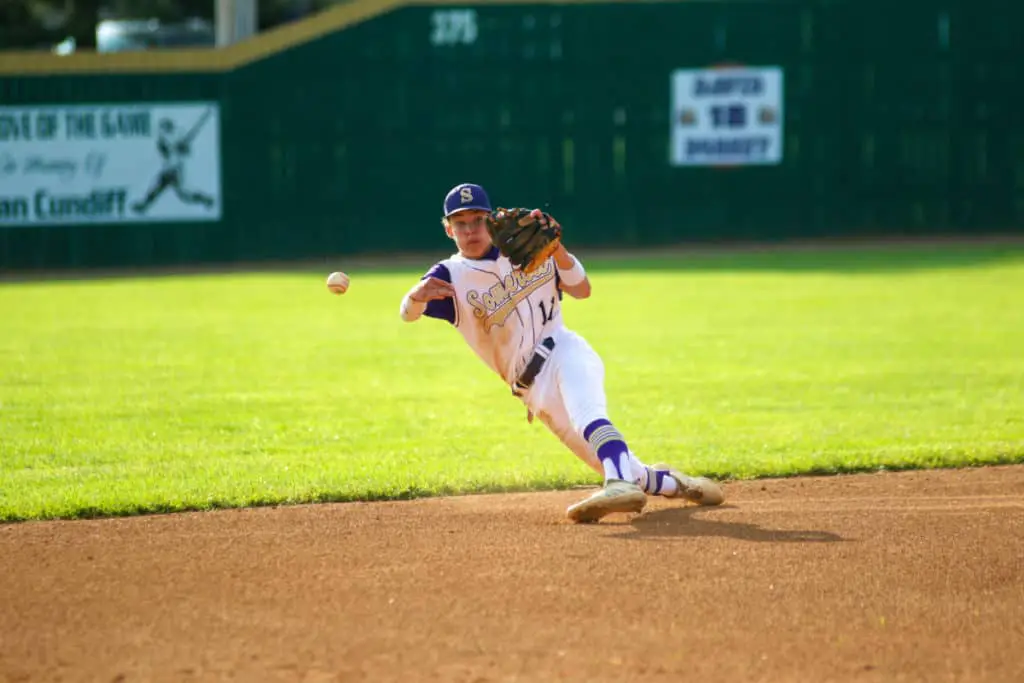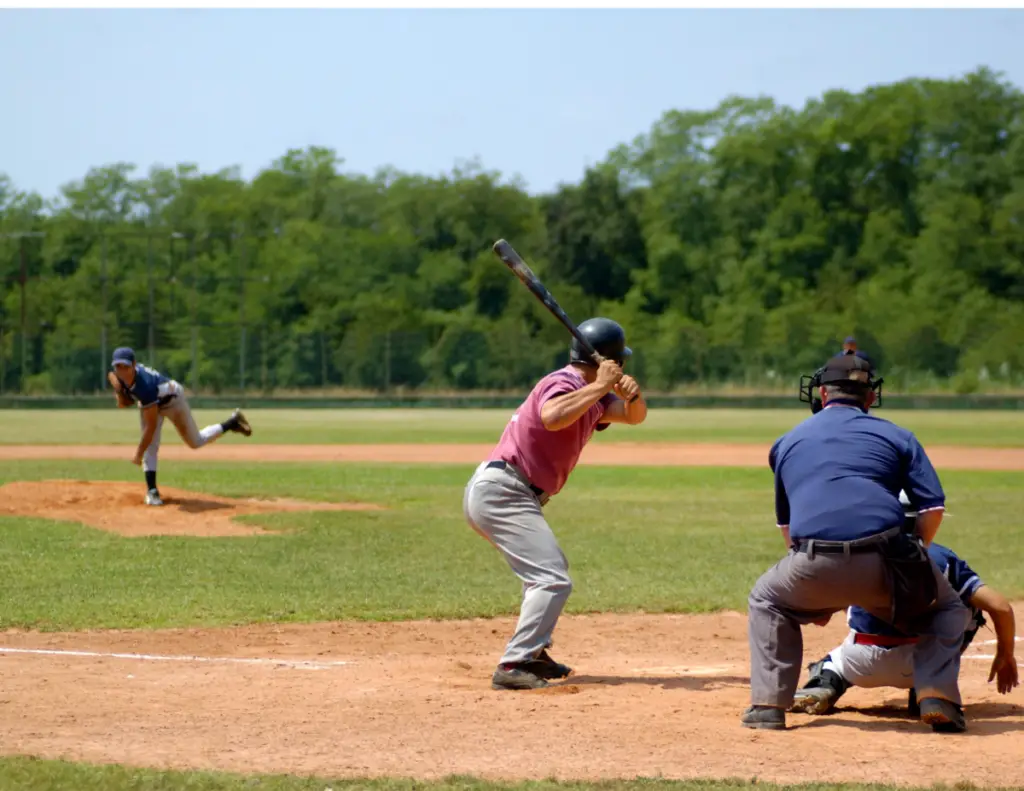In baseball and softball, the 2nd base position is important. There is nothing worse in either sport that a ground ball hit in the infield that doesn’t result in at least one out.
When there is a chance for a double play, the infielders need to capitalize on the opportunity to help the pitcher out.
It is a middle infield position that takes a talented player with quality range, soft hands and a strong enough arm to turn the double play.
While the shortstop position is more difficult and requires some additional skills, 2nd base is still considered a difficult and important position.
How To Play 2nd Base
The player interested in 2nd base should be fast and nimble with quick feet and quick reflexes. The player must possess the ability to get rid of the ball quickly, turn double plays and turn his or her back to the infield and make a catch on a pop fly.
Below, I will dive into the following topics related to play 2nd base:
- Skills Required
- The Importance of the Feet and Hands
- Keys to Making Quality Throws
- Proper Positioning at 2nd base
- Drills to Improve Your Fielding Skills

How To Play 2nd Base: Skills Required
We started into the list above, but here is a complete list of the skills required to be a quality 2nd baseman for your team:
- Fast on feet
- Nimble on feet
- Agile and and quick reflexes
- Ability to get rid of the ball quickly
- Ability to throw accurately from multiple arm slot angles
- Ability to turn the double play
- Ability to turn and run back for a pop fly hit into shallow right or center field
How to decide baseball positions?
How To Play 2nd Base: The Importance of the Feet and Hands
The 2nd baseman needs to have quality feet and hands to maximize his or her potential at 2nd base. Here are some areas to focus on:
- Comfortable in a fielding position
- Play with the weight on the balls of the feet
- Hands low in field ground balls, easier to come up then go down.
- Get in ready position at time of feet – take action with feet
- Keep your head down – focus on showing the bill of the hat
- Field the ball in front of your body
- Always play the ball, look to play a good hop
- Charge the ball on slow rollers
- Use crossover step for balls to either side
- Stay low while charging a ground ball or moving to either side
- On hard hit balls, get in front of ball and use your body
- On plays headed toward 2nd base, plant the right foot to increase throwing velocity on throws to first base.
What is the role of the shortstop?
How To Play 2nd Base: Keys to Making Quality Throws
Fielding the ball is only one half of the play, the 2nd baseman has to be able to make a strong accurate throw to either first base or to second base to get a force out. They are also a cut off on balls hit to right field when the play is at 2nd base. Here are some focus points for throwing:
- Think ahead to where your will throw the ball if the ball is hit to you
- Don’t throw the ball on the 2nd base if you don’t have a chance for the 2nd out. Be sure of the first out at 2nd base.
- Throw in practice as you will in the game. Same velocity, same focus.
- Underhand, side arm, and overhand are all necessary throws – practice all three during practice drills.
What is the hardest position in baseball?
How To Play 2nd Base: Proper Positioning at 2nd base
The properly positioned 2nd baseman can help cut down on the total runs scored by getting to certain ground balls, getting to certain pop ups in the shallow outfield and being in the right place at the right time as expected. Here are some tips:
- Know the hitter and your pitcher. Adjust accordingly.
- Study the hitter and check out the scouting report if one is available
- What type of speed does the hitter have? Play deeper on a slower runner and a bit closer on a faster runner.
- Consider the condition of the field? Wet and slow, dry and firm? Bare infield or grass infield? Adjust accordingly!
How important is the catcher in baseball?
How To Play 2nd Base: Drills to Improve Your Fielding Skills
- Take plenty of ground balls in off season and during the season. Focus on ground balls hit right at you, to your glove side and to your back hand side. Practice all three!
- Work on soft hands by getting on your knees and having a coach or player throw short hops to you.
- Work on pop ups hit into shallow outfield.
- Work on footwork for double plays at 2nd base. Receiving the ball with soft hands, quick transfer, strong throw.
- Work on tagging players out. Catch and swipe.
- Watch videos of the best 2nd basemen to play the game. Focus on footwork, positions, throwing angles, double play technique and how they tag runners out.
Baseball positions in order of importance (rankings)
How To Play 2nd Base: Assess Your Skills
Ask a coach to fully assess you on the essential skills to playing 2nd base. Have a coach take you through the series of drills above and rank you on a scale of 1-5 on each category. The coach should provide one strength and one area to work on. Do this at least once every 4 weeks for constant feedback and evaluation.

What Position Number is 2nd base?
The 2nd base position in baseball and softball is number 4.
How are baseball positions numbered?
Is 2nd Base A Good Position?
Yes, it takes a high level of skills and concentration to play 2nd base. If your coaches puts you in this position, work hard to understand your strengths and weaknesses and how you can improve every day at this position.
The 2nd baseman is important and vital to the overall success of the pitcher and the team in the win/loss column.
2nd base not for you? How about playing catcher?
How to be a catcher in baseball?
Final Thoughts
Whether you are a player or coach, keep the game in perspective and keep it fun. The joy of working hard, improving and competing should keep the player coming back to every practice and return to the team the following year. Enjoy the journey, embrace your teammates and celebrate the accomplishments along the way. Baseball is supposed to be fun, let’s all work to keep it that way!
